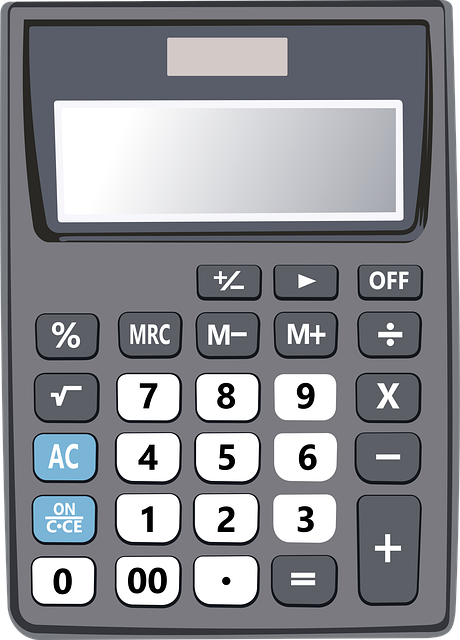The Sarbanes-Oxley Act (SOX) imposes stringent requirements on accountants, particularly Certified Public Accountants (CPAs), focusing on investor protection through accurate and reliable financial disclosures. To achieve SOX compliance, CPAs rely on robust IT systems and internal controls for data integrity, security, and transparent financial processing. They utilize specialized accounting tools and regular IT audits to manage complexities, ensuring dependable legal support. Essential practices include meticulous documentation, strict record-keeping, and continuous monitoring of financial IT systems, along with staff training to maintain compliance and enhance the organization's reputation under regulatory scrutiny.
“In the digital age, financial IT systems play a pivotal role in a CPA’s practice. With stringent regulations like Sarbanes-Oxley (SOX) Act in place, ensuring compliance is not just ideal but imperative. This article guides CPAs through navigating complex SOX requirements, focusing on key financial IT systems, internal controls for data integrity, documentation, regular audits, and staff training. By understanding these aspects, accountants can confidently maintain regulatory compliance while leveraging technology.”
- Understanding SOX Compliance: A Background for CPAs
- Key Financial IT Systems in the Regulatory Scope
- Implementing Internal Controls for Data Integrity
- Documenting Processes and Maintaining Records
- Regular Audits and Continuous Monitoring Strategies
- Training and Education for Effective Compliance by CPA Staff
Understanding SOX Compliance: A Background for CPAs

The Sarbanes-Oxley Act (SOX) is a pivotal piece of legislation that has significantly shaped financial reporting and corporate governance practices, particularly for accountants and CPAs. This act was enacted in response to high-profile accounting scandals, aiming to protect investors by improving the accuracy and reliability of corporate disclosures. For CPAs, SOX compliance involves ensuring that financial IT systems meet stringent requirements to maintain data integrity, security, and transparency.
Understanding SOX compliance is crucial for accountants as it underscores the need for robust internal controls and secure information systems. Regular IT audits for accountants are essential to identify and mitigate risks associated with financial data processing. Additionally, leveraging specialized accounting compliance IT tools can automate and streamline these processes, enabling CPAs to effectively manage the complexities of SOX requirements and provide reliable legal support.
Key Financial IT Systems in the Regulatory Scope

In the realm of modern accounting practices, key Financial IT systems play a pivotal role in ensuring regulatory compliance, particularly under SOX (Sarbanes-Oxley) standards. These digital platforms, integral to daily operations, facilitate financial reporting and data management tasks crucial for CPAs. Systems encompassing general ledger management, accounting software, and enterprise resource planning (ERP) are within the regulatory scope due to their direct impact on financial accuracy and transparency.
Effective IT audits for accountants are essential to verifying these systems’ integrity. As SOX mandates robust internal controls over financial reporting, IT for financial reporting must be carefully designed and maintained. Regulatory data systems, inclusive of customer relationship management (CRM) and enterprise performance management (EPM) tools, contribute significantly to compliance by providing real-time data visibility and traceability, thereby enhancing the accuracy and accountability of financial processes.
Implementing Internal Controls for Data Integrity

Maintaining data integrity is a cornerstone of SOX compliance for accountants. Implementing robust internal controls, including access controls and accounting for data retention, ensures that financial information remains accurate and reliable. CPAs play a vital role in establishing these controls to safeguard against errors, fraud, or unauthorized modifications.
Effective access controls restrict access to sensitive financial data to authorized personnel only, thereby minimizing the risk of manipulation. Additionally, setting clear data retention policies ensures that records are preserved for the required period, facilitating audits and enabling CPAs to provide robust IT legal support when navigating regulatory requirements.
Documenting Processes and Maintaining Records

For CPAs aiming to maintain SOX compliance, meticulous documentation of financial processes and a robust system for record-keeping are non-negotiable. This involves creating detailed documents that outline every step in financial workflows, from transaction processing to reporting. By providing a clear, traceable path for IT systems handling financial data, this documentation facilitates seamless IT audits for accountants, ensuring they can confidently verify the accuracy and integrity of records.
Maintaining secure file storage and access controls accounting is paramount. CPAs should implement strict protocols for storing and accessing sensitive financial data, regularly reviewing and updating permissions to limit access only to authorized personnel. This dual focus on comprehensive documentation and robust security enhances not just SOX compliance but also overall CPA file security, contributing to a more transparent and secure financial management ecosystem.
Regular Audits and Continuous Monitoring Strategies

Regular audits and continuous monitoring are essential strategies for CPAs to maintain SOX compliance. IT audits for accountants play a pivotal role in evaluating the effectiveness of internal controls and ensuring that financial data is secure and accurate. By conducting frequent reviews, accountants can identify potential gaps or weaknesses in their IT systems early on, allowing them to implement necessary corrections promptly.
Continuous monitoring involves ongoing assessment of CPA file security and accounting compliance IT tools. This proactive approach enables accountants to stay ahead of regulatory changes and industry best practices. With the right combination of automated tools and manual checks, CPAs can ensure that their financial IT systems remain robust, secure, and in full adherence to SOX regulations at all times.
Training and Education for Effective Compliance by CPA Staff

For CPAs, ensuring financial IT systems meet regulatory compliance requirements involves a significant investment in staff training and education. Accountants must be well-versed in relevant laws and regulations, such as SOX compliance standards, to effectively navigate complex data management and reporting expectations. Regular workshops, webinars, and continuing education programs can equip staff with the knowledge needed to identify potential gaps and implement necessary controls within IT systems.
Compliance monitoring is not a one-time event but an ongoing process. By fostering a culture of continuous learning, CPAs can empower their teams to conduct thorough IT audits for accountants, examine regulatory data systems, and maintain meticulous records. This proactive approach not only facilitates timely compliance but also enhances the overall integrity of financial reporting processes, thereby strengthening the organization’s reputation in the face of external scrutiny.
